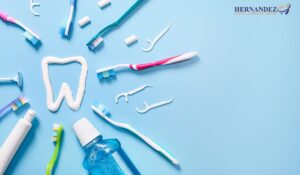Dental bridges are supposed to be an extended-time period solution, however, what takes place once they start to fail? In San Antonio, sufferers often face surprising demanding situations with their dental bridges. San Antonio’s particular weather and dietary habits will have a shocking impact on the toughness of your dental bridge.
Explore the maximum commonplace permanent dental bridge problems confronted by residents in San Antonio and the progressive answers to be had to repair your consolation and self-belief.
What is a Dental Bridge?
A dental bridge is a fixed dental restoration used to replace one or more missing teeth by spanning the gap created by the missing tooth or teeth. It is made of various materials such as porcelain, ceramic, metal alloys, or a combination of these materials. It provides various benefits including restoring the ability to chew and speak properly.
Dental bridge Provides a beautiful shape like normal teeth.
Common Dental Bridge Problems

Tooth Decay and Gum Disease
The natural enamel (abutment enamel) supporting the bridge can emerge as decayed, mainly if the health of the bridge isn’t always the best or if oral hygiene is ignored. Decay can cause cavities, requiring in addition dental work.
Plaque and bacteria can acquire across the base of the bridge, mainly gum disease if proper oral hygiene is not maintained. This can motivate gum inflammation, bleeding, or even result in periodontitis if untreated.

Dental Bridge Problems
Bridge Damage or Displacement
The bridge can grow to be loose over time because of factors like biting difficult foods, teeth grinding (bruxism), or inadequate aid from the abutment tooth. If the bridge becomes unfastened, it can need to be repaired or replaced.
The bridge, especially if made from porcelain, can crack or chip. This can happen due to trauma, biting on something hard, or herbal put on over the years.
Sensitivity
After getting a bridge, a few humans may experience sensitivity within the assisting enamel, particularly while consuming hot or cold foods and drinks. This may be brief or continual, depending on the reason.
Misalignment and Bite Issues

If the bridge isn’t in shape nicely, it could motive pain, problems chewing, or maybe jaw pain because of misalignment. An unwell-fitting bridge may additionally put undue stress on the surrounding tooth. Over time, the bite might exchange because of the bridge sporting down or the natural enamel transferring. This can result in trouble with chewing and soreness.
Aesthetic Issues
The bridge may additionally come to be discolored through the years, particularly if it’s fabricated from materials that are susceptible to staining, including porcelain fused to metal. The gums around the bridge may recede, inflicting an opening or making the underlying metal (if present) visible, which may be aesthetically unpleasing.
Speech Difficulties

Some humans might experience slight modifications in speech, especially straight away once they have a bridge. This normally improves over the years as one adapts to the bridge. Food can on occasion get trapped beneath the bridge or across the abutment teeth, which could lead to awful breath, decay, and gum disease if now not properly cleaned.
Prevention and Care
Maintaining excellent oral hygiene is important. This includes brushing two times daily, flossing, and likely the use of a water flosser to smooth across the bridge. Regular visits to the dentist can assist in the early detection of any issues with the bridge, such as decay, match issues, or gum ailment. Avoid biting down on hard foods or objects to save you from harm to the bridge.
Related Article:
Dental Bridge vs Implant: What’s Best for You
Comprehensive Guide to Root Canal Treatment in San Antonio, TX
FAQ
Q: What is the most common cause of fixed bridge failure?
A: The most unusual purpose of constant dental bridge failure is the decay of the abutment teeth. The abutment tooth is the natural tooth on both facets of the lacking tooth that aids the bridge.
If plaque and bacteria gather around these teeth and aren’t properly removed through proper oral hygiene, it can cause decay. Once the abutment teeth are compromised through decay, they cannot help the bridge, leading to its failure.
Q: What percentage of dental bridges fail?
A: The failure rate of dental bridges varies depending on several factors, including the type of bridge, the materials used, the skill of the dentist, and the patient’s oral hygiene habits.

